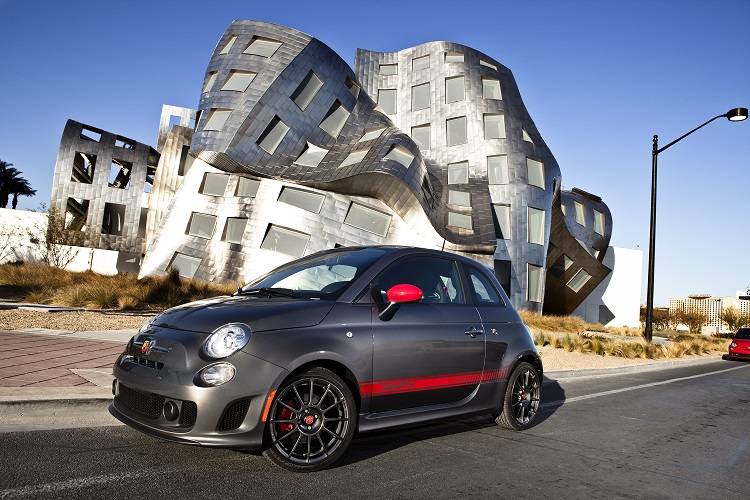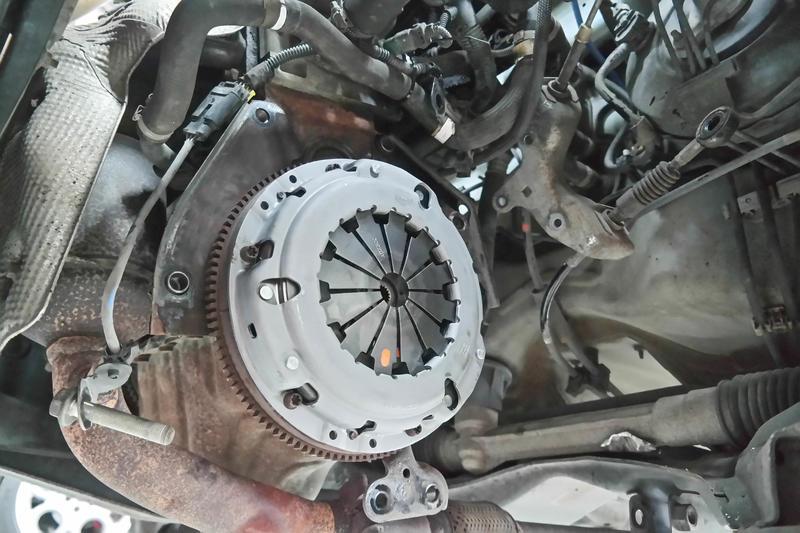
How to Fix Fiat 500 Clutch Problems: Symptoms and Solutions

The Fiat 500 is a stylish and fun-to-drive city car, but like any vehicle, it can experience mechanical issues, including clutch problems. A faulty clutch can cause frustrating symptoms such as slipping, juddering, or failure to engage gears properly. If you're experiencing clutch issues with your Fiat 500, it's essential to identify the root cause and address it promptly to avoid further damage. In this article, we'll explore the common symptoms of Fiat 500 clutch problems and provide practical solutions to get your car running smoothly again. Understanding the causes is key to effective repairs.
Diagnosing Fiat 500 Clutch Problems
The Fiat 500 is a popular city car known for its stylish design and agile handling. However, like any vehicle, it can experience clutch problems, which can be frustrating and costly to repair if not addressed promptly. Understanding the symptoms and causes of clutch issues is crucial for effective diagnosis and repair. The clutch is a critical component that enables smooth gear transitions, and its failure can lead to difficulties in shifting gears, among other issues.
Identifying Clutch Failure Symptoms
Identifying the symptoms of clutch failure is the first step towards diagnosing the problem. Common symptoms include a spongy or soft clutch pedal, clutch slippage, dragging clutch, and grinding or squealing noises when pressing the clutch pedal. These symptoms can indicate worn-out clutch components, such as the clutch disc, pressure plate, or release bearing. If you notice any of these symptoms, it's essential to have your Fiat 500 inspected by a qualified mechanic to determine the root cause of the problem.
| Symptom | Possible Cause |
|---|---|
| Spongy Clutch Pedal | Air in the clutch hydraulic system or worn-out clutch master cylinder |
| Clutch Slippage | Worn-out clutch disc or pressure plate |
| Grinding Noises | Worn-out release bearing or clutch disc |
Causes of Clutch Problems in Fiat 500
Clutch problems in the Fiat 500 can be caused by various factors, including wear and tear, misuse, or manufacturing defects. The clutch system is subject to significant stress, particularly in stop-and-go city driving or when driving in hilly or mountainous terrain. Over time, this stress can cause the clutch components to wear out, leading to problems. Additionally, aggressive driving habits, such as riding the clutch or sudden acceleration, can also contribute to clutch wear and tear.
| Cause | Description |
|---|---|
| Wear and Tear | Normal wear on clutch components over time |
| Misuse | Aggressive driving habits or incorrect clutch usage |
| Manufacturing Defects | Defects in clutch components or hydraulic system |
Repairing Fiat 500 Clutch Problems
Repairing clutch problems in the Fiat 500 typically involves replacing the worn-out or damaged clutch components. The repair process may require clutch replacement, hydraulic system bleeding, or release bearing replacement. It's essential to use genuine Fiat parts to ensure compatibility and reliability. A qualified mechanic can assess the problem and recommend the necessary repairs to get your Fiat 500 back on the road.
| Repair | Description |
|---|---|
| Clutch Replacement | Replacing the worn-out clutch disc, pressure plate, or release bearing |
| Hydraulic System Bleeding | Removing air from the clutch hydraulic system |
| Release Bearing Replacement | Replacing the worn-out release bearing |
What is the clutch problem with the Fiat 500?

The clutch problem with the Fiat 500 is a known issue that has been reported by numerous owners and drivers. The problem typically manifests as a slipping or failing clutch, which can cause the vehicle to hesitate or stall when accelerating from a standstill. This issue is often attributed to the design of the clutch system, which can be prone to overheating and wear.
Common Symptoms of Clutch Failure
The symptoms of clutch failure in the Fiat 500 can be subtle at first, but they can quickly become more pronounced and problematic. Some common signs of clutch failure include:
- A spongy or soft clutch pedal that lacks its normal firmness and resistance
- A burning smell or noise when pressing the clutch pedal, indicating excessive wear or friction
- Difficulty shifting gears or a feeling of grinding or hesitation when trying to engage a gear
Causes of Clutch Problems in Fiat 500
There are several factors that can contribute to clutch problems in the Fiat 500. Some of the most common causes include:
You may be interested in reading Diagnosing Fiat 500 Automatic Gearbox Issues: What You Need to Know
Diagnosing Fiat 500 Automatic Gearbox Issues: What You Need to Know- Excessive wear and tear on the clutch components, such as the clutch disc, pressure plate, and flywheel
- Improper driving habits, such as riding the clutch or using the clutch to slow down the vehicle
- Mechanical issues, such as a faulty clutch release bearing or a misaligned clutch assembly
Repairing and Replacing the Clutch
Repairing or replacing the clutch in a Fiat 500 can be a complex and labor-intensive process. It typically requires specialized tools and expertise, and may involve replacing multiple components, such as the clutch disc, pressure plate, and release bearing. Some key considerations when repairing or replacing the clutch include:
- Ensuring that the new clutch components are compatible with the vehicle's transmission and engine
- Properly aligning and installing the new clutch assembly to prevent premature wear or failure
- Testing the clutch system thoroughly after repair or replacement to ensure proper function and performance
What are the first signs of clutch failure?

The first signs of clutch failure can be identified by paying attention to the symptoms that occur while driving a vehicle with a manual transmission. One of the primary indicators is a change in the feel of the clutch pedal.
Clutch Pedal Feel Changes
When the clutch begins to fail, the pedal may feel different when pressed. This can include a spongy or soft feel, or it may feel harder than usual to press down.
- The clutch pedal may vibrate or shudder when pressed.
- It may also make unusual noises, such as squealing or chirping sounds.
- The pedal may also feel like it's pulsating or has a 'grabbing' sensation when depressed.
Slipping or Dragging Clutch
Another sign of clutch failure is when the clutch slips or drags. Slipping occurs when the clutch fails to fully engage, causing the engine to rev without the vehicle accelerating as expected.
- The vehicle may accelerate more slowly than usual or may not accelerate at all when the clutch is released.
- A dragging clutch occurs when the clutch doesn't fully disengage, causing the gears to grind when shifting.
- This can also lead to the vehicle lurching or jerking when shifting into gear.
Unusual Noises or Smells
Unusual noises or smells can also be indicative of clutch failure. When the clutch is worn out or failing, it can produce distinct sounds or odors.
- A grinding or squealing noise when pressing the clutch pedal can be a sign of worn-out clutch components.
- A burning smell, similar to burning rubber or friction material, can be emitted when the clutch is overheating or worn out.
- Unusual noises when shifting gears, such as grinding or clunking sounds, can also be related to clutch failure.
How long should a clutch last on a Fiat 500?

The lifespan of a clutch on a Fiat 500 can vary greatly depending on several factors, including driving habits, road conditions, and maintenance. Generally, a well-maintained clutch on a Fiat 500 can last anywhere from 50,000 to 100,000 miles or more. However, some clutches may need to be replaced as early as 20,000 miles or as late as 150,000 miles.
Factors Affecting Clutch Lifespan
The lifespan of a clutch is influenced by various factors, including driving style and conditions. Aggressive driving, such as rapid acceleration and braking, can reduce the lifespan of a clutch. On the other hand, gentle driving and regular maintenance can help extend its lifespan. Some key factors that affect clutch lifespan include:
You may be interested in reading Diagnosing Fiat 500 Automatic Gearbox Issues: What You Need to Know
Diagnosing Fiat 500 Automatic Gearbox Issues: What You Need to Know Fiat 500 Engine Overheating: Causes and How to Prevent It
Fiat 500 Engine Overheating: Causes and How to Prevent It- Driving habits, such as frequent city driving or driving in heavy traffic
- Road conditions, such as hilly or mountainous terrain
- Maintenance habits, such as regular clutch inspections and adjustments
Signs of Clutch Wear
It's essential to recognize the signs of clutch wear to avoid further damage to the transmission and other components. Some common signs of clutch wear include slipping, dragging, or difficulty shifting gears. If you notice any of these symptoms, it's crucial to have your clutch inspected by a mechanic as soon as possible. Some key signs of clutch wear include:
- Slipping or shuddering when accelerating
- Grinding or squealing noises when pressing the clutch pedal
- Difficulty shifting gears or feeling a spongy clutch pedal
Clutch Maintenance Tips
Regular maintenance is crucial to extending the lifespan of a clutch. This includes checking the clutch fluid level, inspecting the clutch for signs of wear, and adjusting the clutch as needed. By following these tips, you can help prevent premature clutch wear and ensure smooth shifting. Some key clutch maintenance tips include:
- Checking the clutch fluid level regularly
- Inspecting the clutch for signs of wear or damage
- Adjusting the clutch as needed to maintain proper tension
What is the clutch recall on Fiat?

The clutch recall on Fiat is related to a potential issue with the clutch system in certain models, which may cause the vehicle to stall or lose power, increasing the risk of a crash. The recall affects specific Fiat models, and owners are advised to contact their local dealership for repairs.
Reason for the Clutch Recall
The clutch recall on Fiat is due to a faulty clutch system that may not function properly, causing the vehicle to stall or experience a loss of power. This issue can be attributed to a manufacturing defect or a design flaw in the clutch system. The potential consequences of this issue include:
- Increased risk of a crash due to sudden loss of power
- Difficulty in controlling the vehicle, especially in heavy traffic or hazardous road conditions
- Inconvenience and potential safety risks associated with the vehicle stalling or losing power
Models Affected by the Clutch Recall
The clutch recall on Fiat affects certain models, including those produced during specific manufacturing periods. The affected models may include the Fiat 500, Fiat 500L, or other models that are equipped with the faulty clutch system. To determine if a specific vehicle is affected, owners can:
- Check the vehicle's VIN on the Fiat website or through a local dealership
- Review the recall notice sent by Fiat to affected owners
- Contact Fiat's customer service department for more information
Repair and Replacement Options
To address the clutch recall on Fiat, affected owners can contact their local dealership to schedule a repair or replacement. The repair may involve inspecting and replacing the faulty clutch system components, or in some cases, replacing the entire clutch assembly. The steps involved in the repair process include:
- Inspecting the clutch system to identify the faulty components
- Replacing the faulty components or the entire clutch assembly
- Testing the vehicle to ensure the clutch system is functioning properly
Frequently Asked Questions
What are the common symptoms of Fiat 500 clutch problems?
The common symptoms of Fiat 500 clutch problems include difficulty shifting gears, slipping or jerking when accelerating, and a spongy or soft clutch pedal. You may also experience unusual noises when pressing the clutch pedal or a burning smell coming from the clutch area. If you notice any of these symptoms, it's essential to have your clutch inspected by a mechanic to determine the root cause of the issue.
How do I know if my Fiat 500 clutch is worn out?
A worn-out clutch can be identified by its failure to engage or disengage properly. If your Fiat 500's clutch is worn out, you may notice that the engine RPM increases without a corresponding increase in speed, or the clutch pedal feels loose or spongy. You may also experience difficulty shifting gears or hear unusual noises when pressing the clutch pedal. Inspecting the clutch for wear and tear can help determine if it needs to be replaced.
You may be interested in reading Diagnosing Fiat 500 Automatic Gearbox Issues: What You Need to Know
Diagnosing Fiat 500 Automatic Gearbox Issues: What You Need to Know Fiat 500 Engine Overheating: Causes and How to Prevent It
Fiat 500 Engine Overheating: Causes and How to Prevent It Troubleshooting Fiat 500 Electrical Problems: A Comprehensive Guide
Troubleshooting Fiat 500 Electrical Problems: A Comprehensive GuideCan I fix Fiat 500 clutch problems myself?
While some minor clutch issues can be resolved with DIY repairs, it's generally recommended to seek the help of a professional mechanic for more complex problems. Replacing a clutch can be a complicated and labor-intensive process, requiring specialized tools and expertise. If you're not experienced with clutch repairs, it's best to have a qualified mechanic diagnose and fix the issue to ensure it's done correctly.
How much does it cost to replace a Fiat 500 clutch?
The cost to replace a Fiat 500 clutch can vary depending on several factors, including the model year, engine type, and labor costs. On average, you can expect to pay between $500 to $1,500 for a clutch replacement, including parts and labor. It's essential to get a detailed quote from a mechanic before proceeding with the repair to ensure you're aware of all the costs involved.

If you want to know other articles similar to How to Fix Fiat 500 Clutch Problems: Symptoms and Solutions you can visit the category Common Problems.
Deja una respuesta






More content of your interest